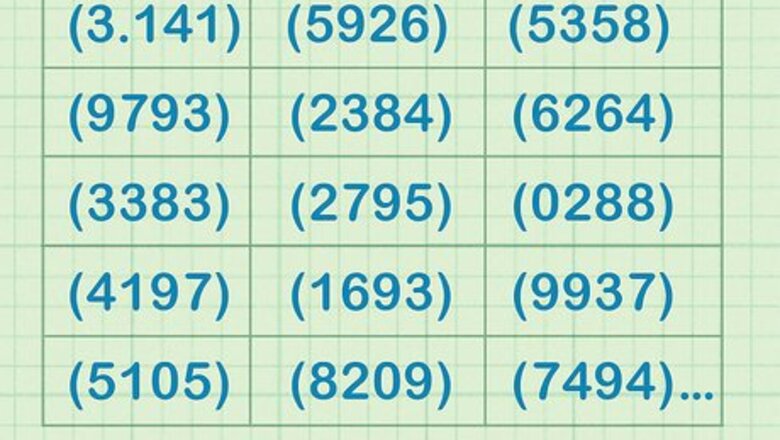
views
Grouping Digits
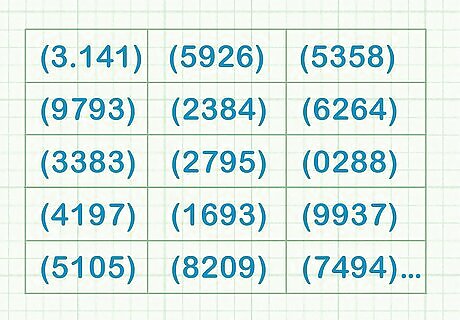
Create a chart. Write out pi to however many digits you hope to memorize. After you've written it out, group the digits in odd numbers by penciling in parentheses around them. Start with groups that have four digits in each one them : (3.141)(5926)(5358)(9793)(2384)(6264)(3383), etc. You can also group the digits in such a way that they all have a pattern, like: (31415)(92)(6535)(8979)(323), etc.

Start small. The easiest way to memorize anything is by starting with a small group and working your way up. Like with weightlifting or sprints, you've got sets and repetitions, and you don't want to overwork yourself by trying to jam 100 digits into your brain all at once. Start by memorizing four groups of four digits each. You can work your way up to ten groups of four digits each, one at a time, slowly. Then double your recitations to five groups of eight digits each. It'll be exactly the same number of digits, but you'll be able to up your memorization by adding larger "sets."
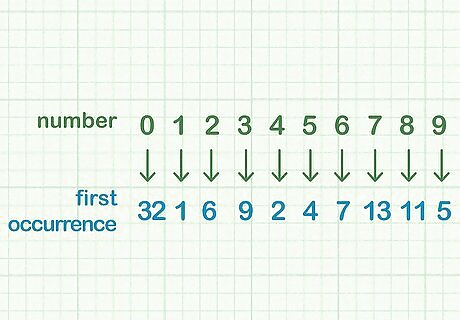
Memorize the first occurrence of each number 0-9. Doing this can help you remember which digit is next if you're reciting pi. For example, you can remember that the first digit after the decimal point is 1, and the 32nd digit after the decimal point is the first 0.
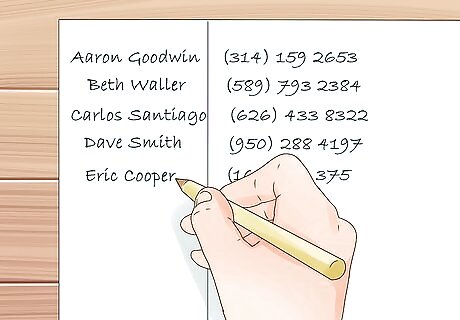
Try grouping numbers in telephone sequences. Most memorization techniques or "mnemonics" operate under the principle that it's easier to memorize other things, like telephone numbers, than a complex series of digits. If you work up to grouping pi in groups of ten digits, you can organize the numbers into telephone number sequences that are more easy to memorize: Aaron (314)159-2653, Beth (589)793-2384, Carlos (626)433-8327, etc. Giving them alphabetical names ensures that when you've memorized the first 260, you can start over and complete a whole "phone book."
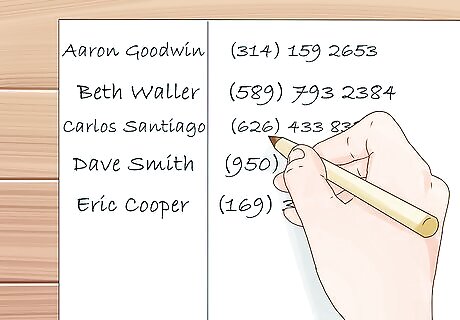
Add details to coordinate the list. This is how pros can not only memorize the digits in order, but pull out particular groups of numbers at will. Try using names with the number of letters that correspond to the first digit in the sequence: Amy (314)159-2653. Also try using real names and associating real things with the name on the list, or even fake things about each person. The closer you can link the numbers to the list of names in your mind, the easier it will be to remember the numbers. You can also combine this technique with the major system and linking techniques discussed below.

Keep your groups on note cards. Carry the cards around with you as you go about your day, working on your recitation. When you can comfortably recite each group, continue adding another until you've reached your goal.
Using Word and Sound Substitutions
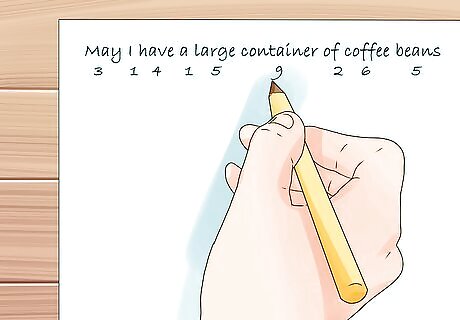
Write out sentences in "pilish." In pilish, the number of letters in each word stands for the corresponding number in pi. For example, "May I have a large container of coffee beans" = 314159265 in pilish. In 1996, Mike Keith wrote a short story called "Cadaeic Cadenza" in which some 3800 digits of pi were encoded. Keith also developed a method of using words longer than 10 letters to represent sequences of numbers.
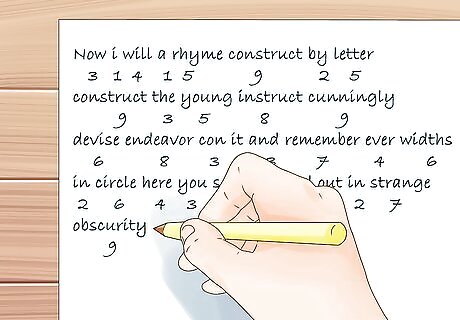
Write poems in pilish. A piem is a poem that encodes pi in its words, using the pilish method. Typically, they rhyme for the purposes of memorization and have titles of three letters, representing the 3 that begins pi. A piem: Now I will a rhyme construct, / By letter count, the young instruct. / Cunningly devised endeavors, / Con it and remember ever. / Widths in circle here you see, / Sketched out in strange obscurity.

Rhyme to memorize. Many schoolyard mnemonics have developed over the years to help memorize the first several digits of pi: Cosine, secant, tangent, sine / Three point one four one five nine. This mnemonic relies on using the rhythm and pattern to recall the memorized numbers. Lots of other memorization songs use the same technique: "If numbers had a heaven / their God would surely be / 3.14159 / 26535." The ABC tune, aka "Baa-Baa Black Sheep," aka "Twinkle Twinkle Little Star": 3 1 4 1 5 9 2 / 6 5 3 5 8 9 / 7 9 3 2 3 8 4 / 6 2 6 4 3 3 8 / 3 2 7 9 5 0 2 / 8 8 4 1 9 7 1 Try writing your own song or rhyme to help yourself remember.
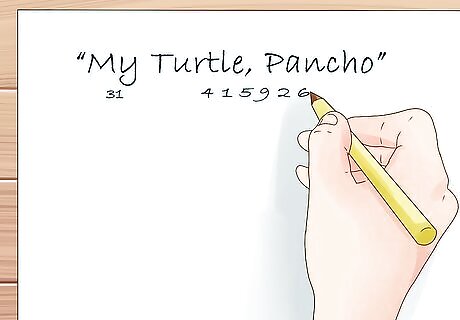
Try learning the major system. Derivatives of the major system are used by some of the best mnemonists in the world. This extraordinarily complex technique involves substituting each digit or group of digits for a corresponding word that is phonetically similar, and eventually building a story or a series of linkages out of those words.




















Comments
0 comment